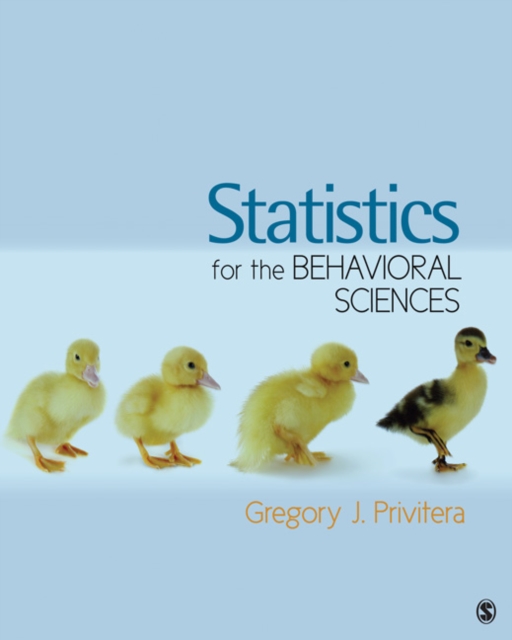
Statistics for the Behavioral Sciences Hardback
by Gregory J. Privitera
Hardback
Description
An engaging introduction to statistics, the text provides readers with a tool for learning about behaviour without requiring a strong background in research methods.
This comprehensive, yet conversational, text includes making sense sections to help relate and explain material that is often difficult for students to comprehend.
The book provides instructions for using SPSS statistical software in each chapter with helpful examples and over 100 screen shots.
Gregory Privitera takes a user-friendly approach while balancing statistical theory, computation, and application with the technical instruction needed for students to succeed in the modern era of data collection, analysis, and statistical interpretation.
Key Features - 'making sense' sections break down the most difficult concepts in statistics for students, review important material, and basically "make sense" of the most challenging material.
These sections are aimed at easing student stress, and making statistics more approachable. - 'research in focus' sections in Chapters 1 through 7 provide context by reviewing pertinent, current research that makes sense of or illustrates important statistical concepts discussed in the chapter.
This feature prepares students to read research articles by providing examples on how a particular statistical method is reported. -"SPSS in focus" sections provide step-by-step, classroom-tested instruction using practical research examples for how the concepts taught in each chapter can be applied using SPSS.
Students are supported with screen shot figures and explanations for how to read SPSS output. - numerous opportunities for practice are found in the 32-38 problems at the ends of each chapter.
These are divided into different kinds of problems (factual problems, concept and application problems, and problems in research) categorized for easier identification and flexibility of assessment by instructors.
Information
-
Item not Available
- Format:Hardback
- Pages:736 pages, Illustrations
- Publisher:SAGE Publications Inc
- Publication Date:31/10/2011
- Category:
- ISBN:9781412969314
Other Formats
- Paperback / softback from £26.05
- Hardback from £110.00
- Mixed media product from £109.15
Information
-
Item not Available
- Format:Hardback
- Pages:736 pages, Illustrations
- Publisher:SAGE Publications Inc
- Publication Date:31/10/2011
- Category:
- ISBN:9781412969314






